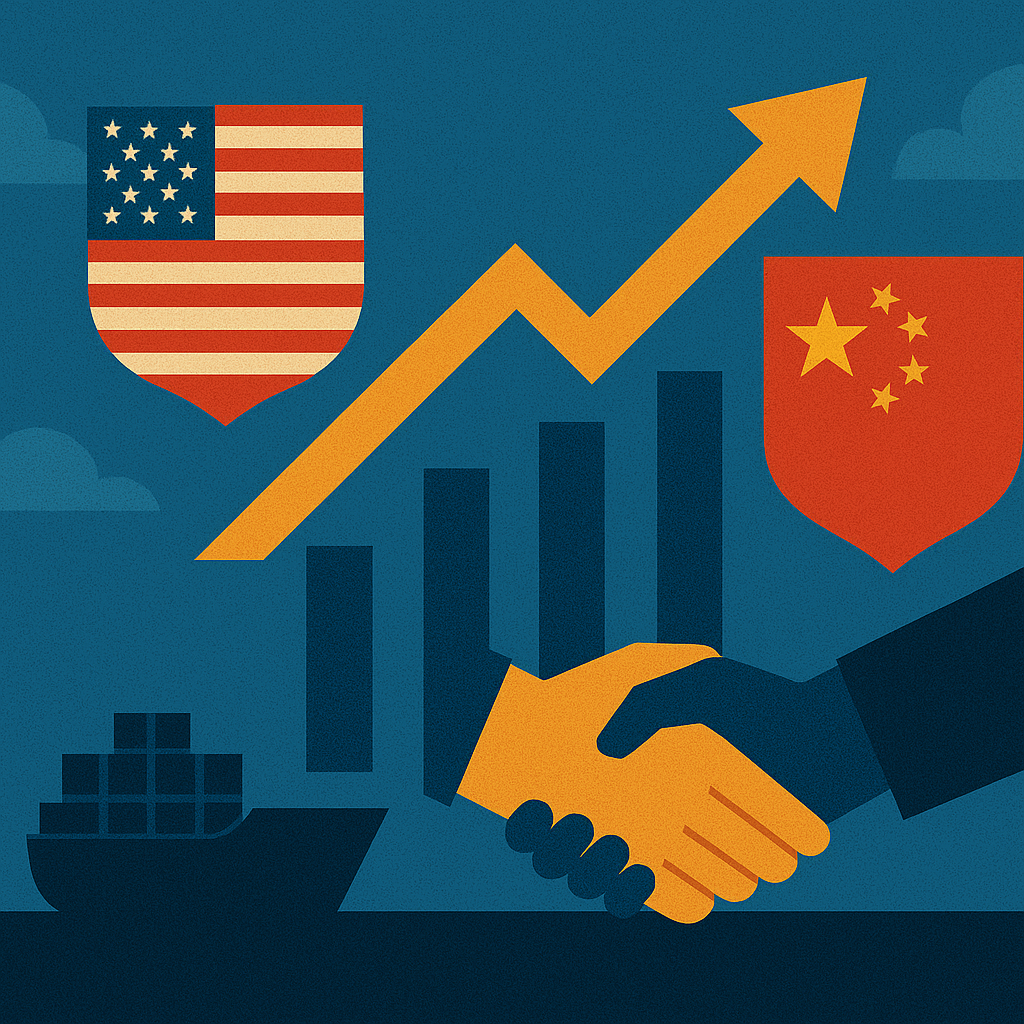A Market Rebound Fueled by Diplomacy
Global markets woke up to a jolt of optimism this week as S&P 500 futures jumped more than 3% following a pivotal agreement between the United States and China to reduce tariffs on a range of traded goods. The long-standing economic friction between the world’s two largest economies appears to be easing—a move that has immediately buoyed investor sentiment and triggered a rally across international equities.
The agreement, reported by Bloomberg, signals a fresh chapter in U.S.-China trade relations, with both governments pledging to dismantle select tariffs introduced during the trade war era. Investors, who have grown increasingly cautious amid global uncertainty, are viewing this as a potential inflection point for global economic momentum.
Why This Matters for Investors
Trade Tensions Have Weighed on Markets—Until Now
Since 2018, U.S.-China trade tensions have injected significant volatility into global markets. Tariff hikes affected everything from tech components to agricultural exports, squeezing corporate margins and unsettling supply chains. The recent agreement to roll back a substantial portion of those tariffs is expected to alleviate pressure on import-heavy industries and restore confidence among multinational corporations.
According to Bloomberg analysts, the removal of certain tariffs could boost U.S. GDP growth by 0.3% to 0.5% over the next 12 months, while simultaneously providing relief for Chinese exporters. This is particularly impactful for consumer electronics, automotive, agriculture, and industrial manufacturing—all sectors with deep exposure to cross-border trade.
Markets React Swiftly—and Positively
The immediate market response reflects a shift in investor outlook, with futures on the S&P 500 spiking over 3% in pre-market trading. The Dow Jones Industrial Average and Nasdaq futures also climbed over 2.5%, suggesting a broad-based rally once regular trading resumes.
Companies like Apple (AAPL), Caterpillar (CAT), and Boeing (BA)—which are heavily exposed to China—are already seeing upward momentum. Semiconductor stocks such as NVIDIA (NVDA) and Intel (INTC) also posted gains as easing tariffs are expected to reduce input costs and stabilize international demand.
Core Analysis: Sector Impact and Global Implications
Technology and Manufacturing Stand to Benefit
Tech firms that rely on Chinese supply chains could see margin improvements and more predictable production schedules. Apple, for example, faced cost pressures from tariffs on Chinese components and assembly. The tariff rollback may translate to higher earnings and stronger guidance for upcoming quarters.
On the manufacturing front, U.S. industrials that export to China—like Caterpillar and General Electric—may regain lost ground in Asia, where demand remains high but had been stifled by trade barriers.
Retail and Consumer Goods Could Regain Momentum
Retailers and consumer product companies importing goods from China are expected to benefit from lowered import costs, potentially improving profit margins just ahead of key sales periods like back-to-school and holiday seasons. Shares of Walmart (WMT) and Target (TGT) could see renewed interest from institutional buyers.
Key Investment Insight
Investors should consider positioning portfolios to take advantage of rebounding international trade and reduced tariff-related headwinds. This includes:
- Increasing exposure to multinational companies with high China-related revenues.
- Monitoring ETFs that track global or emerging markets, such as iShares MSCI ACWI (ACWI) or Vanguard FTSE Emerging Markets ETF (VWO).
- Watching for renewed earnings guidance revisions in the next earnings season from companies in tech, consumer discretionary, and industrials.
As trade friction eases, global equities may regain upward momentum, particularly in export-sensitive sectors.
Future Trends to Watch
- Supply chain recalibrations: Firms may revisit reshoring or nearshoring plans if trade barriers continue to ease.
- Policy continuity: Will future administrations uphold or reverse tariff reductions? Long-term investors should factor in geopolitical risk.
- China’s response: The Chinese market may see renewed capital inflows as Western investors regain confidence.
Final Thoughts: A Trade Truce That Could Signal Broader Recovery
The U.S.-China tariff reduction agreement arrives at a critical juncture for markets hungry for positive macroeconomic catalysts. While uncertainties remain, this move represents a strategic de-escalation of one of the most consequential trade conflicts in modern history. For investors, it could mark the beginning of a new phase of growth and opportunity in both domestic and international markets.
Stay Informed with MoneyNews.Today
To stay ahead of critical market developments and actionable investor news, follow MoneyNews.Today—your daily edge in financial intelligence.





